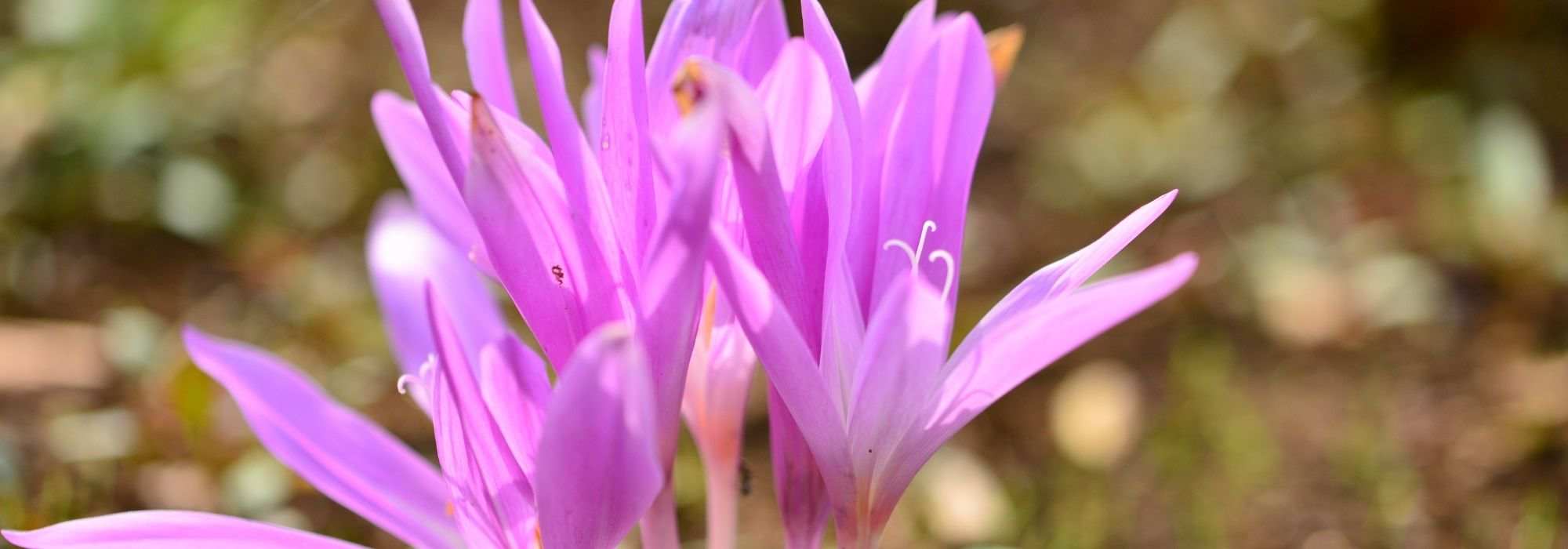
How to grow colchicums in pots?
Our tips for successful planting and care
Contents
Colchicums are lovely bulbous plants with autumn flowering, which easily brighten up the garden at the end of summer and can form large, colourful carpets.
These autumn crocuses or meadow saffrons typically bloom in October, or even in September for early varieties and depending on the climate. Their soft shades of purple, pink, or white are undeniably charming and allow for the creation of very refined scenes.
Easy to grow and low-maintenance, colchics can be grown in the ground to dress lawns, rockeries, and woodlands, or in containers for a delightful flowering pot.
Here are our tips for choosing the best varieties, successfully planting, and properly maintaining colchics in pots.
Which varieties of colchicum should you choose for pot cultivation?
Colchicums have a small silhouette. Indeed, they typically reach a height of 15 to 20 cm with a spread of 10 cm. This small size makes them perfect candidates for pot or container cultivation, to brighten up small spaces, terraces, and balconies in autumn.
All varieties are suitable for pot planting:
- Colchicum autumnale ‘Album’, with its elegantly pure white flowers
- Colchicum autumnale ‘Major’, featuring a lovely pink-lilac veined with white
- the hybrid colchicum ‘The Giant’, a waterlily colchicum with large 15 cm flowers, showcasing a beautiful light violet colour
- the colchicum ‘Autumn Queen’, with large flowers of a magnificent lilac marbled with dark purple
- the very bright Colchicum speciosum atrorubens, with its purple flowering and white throat, reminiscent of giant crocuses
- the hybrid colchicum ‘Waterlily’, offering beautiful double pink-lilac flowers resembling waterlilies
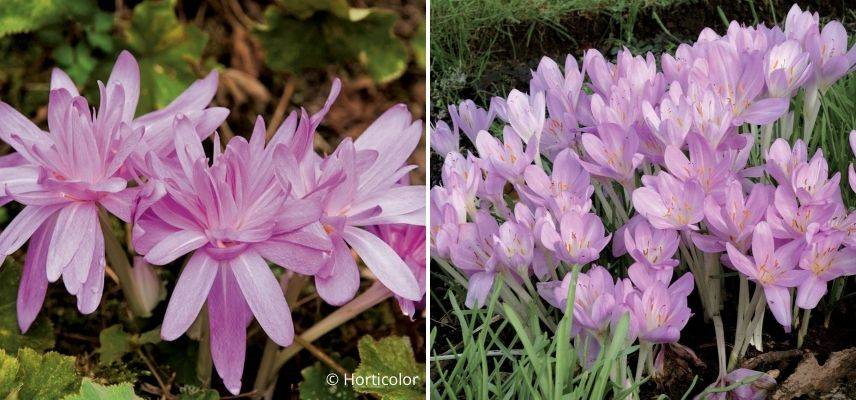
Colchicum autumnale ‘Waterlily’ and Colchicum ‘The Giant’
Read also
Planting bulbs: which tools to choose?When to plant the colchicum in a pot?
Colchicum should ideally be planted in medium or late summer, around July-August, during its dormancy period. This way, it can flower in the first year after planting.
The foliage will appear in spring, in April-May, before disappearing at the beginning of summer, at the end of June.
Discover other Colchicum
View all →Available in 0 sizes
Available in 0 sizes
Available in 2 sizes
Available in 1 sizes
Available in 1 sizes
Available in 1 sizes
Available in 1 sizes
Available in 1 sizes
Available in 1 sizes
Available in 1 sizes
Planting colchicums in pots
Container
When planting your colchicums, choose containers that are wide enough (at least 50 cm) to accommodate several plants and create a beautiful flowering display. Large planters and troughs will be perfectly suitable.
However, there is no need to select a container that is too deep, given the small stature of colchicums: 30 cm of depth is generally sufficient.
Substrate
Colchicums prefer light, well-drained, and cool soils.
Opt for a mix that includes:
- garden soil, potting soil for planters and pots or potting soil for perennials and borders that promotes flowering
- a handful of sand to enhance drainage
- a handful of well-matured compost (optional)
Planting
- Place a thin layer of gravel, pouzzolane, or clay balls at the bottom of the container to improve drainage and prevent water stagnation
- Fill the container with the mixed substrate
- Using a dibber, dig a hole 15 cm deep
- Place the corm of the colchicum (a storage organ resembling a bulb) with the point facing upwards
- For a beautiful effect, plant several colchicums grouped in the container, spaced about 10 to 15 cm apart
- Cover with substrate and firm down with your fingers
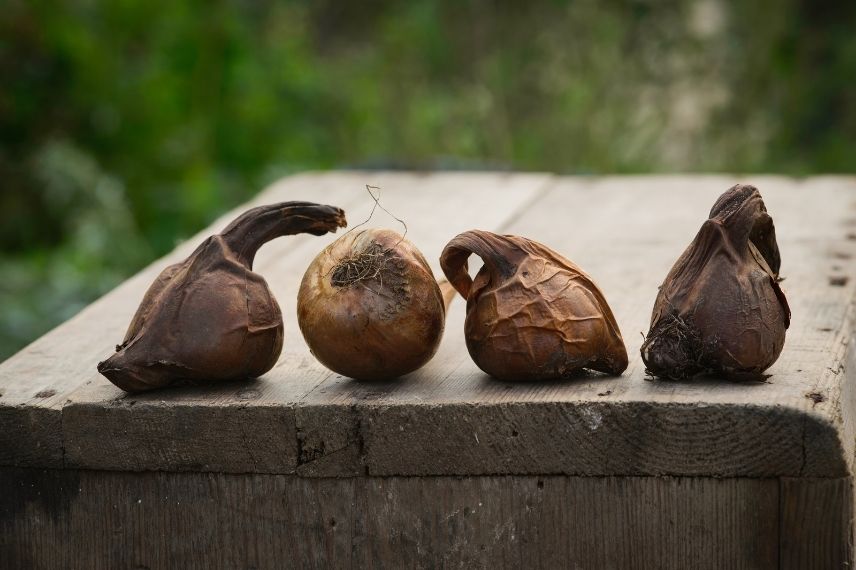
Colchicum corms
Exposure
Colchicums in pots will find their place on a terrace, a windowsill, or a balcony. While they can tolerate a shaded position, a bright spot in the sun or light shade will encourage their flowering.
Avoid placing the container inside the house, as the atmosphere is generally too dry.
During flowering, also avoid locations exposed to prevailing winds or heavy rain, which could damage the delicate flowers.
Caring for colchicums in pots
One of the advantages of colchicums is that they require no maintenance and thrive almost entirely autonomously once planted. They will thus reappear spontaneously each year.
Watering
In pots, the substrate tends to dry out more quickly than in open ground. While watering is usually not necessary, it will be essential here in the case of prolonged drought.
At other times, water lightly every 15 days from spring until flowering, and more frequently in dry climates.
Fertilisation
The addition of fertiliser for growing colchicums in pots is not essential.
However, if you wish, you can use liquid or stick fertilisers to stimulate flowering, or pot and container fertiliser, following the quantities indicated on the packaging by the manufacturers.
Pruning
Colchicums do not need to be pruned. In spring, removing the leaves before they wither would even be detrimental, as they help to build the plant’s reserves within its underground corm.
You can therefore safely leave the leaves on the plant without touching them, even when they turn yellow.
Repotting and division
After planting, colchicums do not like to be moved. They can remain in a pot for several years without repotting. It is possible to perform a top dressing by replacing the top few centimetres of substrate with fresh potting soil every year or every two years.
Colchicums spread spontaneously, can self-seed, and multiply over the years. If they start to become too numerous in their container, they can be divided. This should be done on average every four years in summer, during dormancy. To do this, gently dig up the corms and separate them by hand or with a clean tool. The best specimens should be replanted quickly to avoid drying out, either in open ground or in a new container.
Diseases and pests
A low-maintenance plant, the colchicum is also one that experiences few diseases and pests.
The appearance of botrytis or grey mould, a fungal disease that causes brown spots and grey fluff, results from excess moisture and can appear in spring or autumn. Be sure to keep the substrate well-drained and avoid crowding the colchicums at planting, so that the foliage can aerate and air circulation is naturally encouraged. When watering, also avoid wetting the foliage.
Greedy gastropods can also cause some damage to the young foliage in spring. Spread crushed eggshells, ash, or a hemp mulch around the base of the plants as a preventive measure or to limit damage.
Wintering
Colchicums are hardy plants that can withstand temperatures of -15°C to -20°C. They particularly appreciate regions with cold, marked winters, which is why they can even thrive in montane and moist climates.
It is therefore not necessary to protect or winter the colchicum bulbs during the cold season.
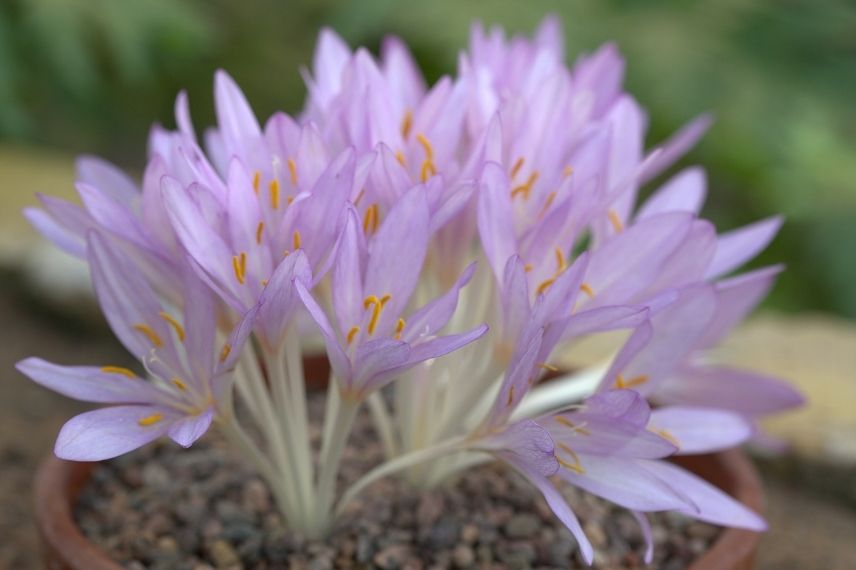
Colchicum cilicicum (photo Averater – Wikimedia)
For further reading
- Discover ideas for pairing colchicums
- Subscribe!
- Contents
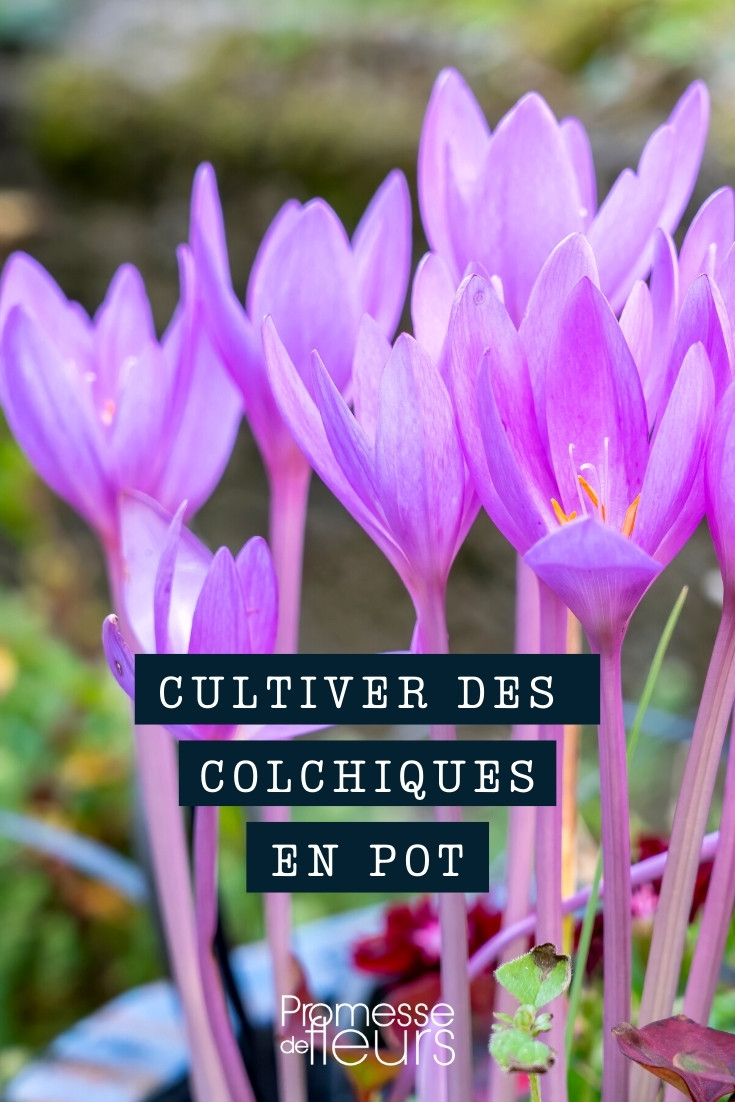































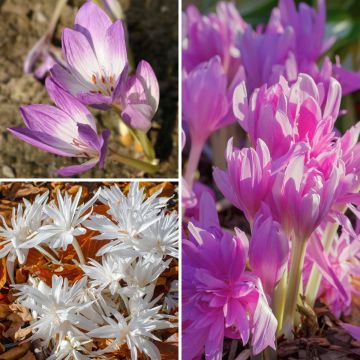
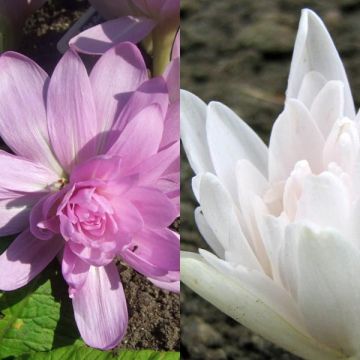
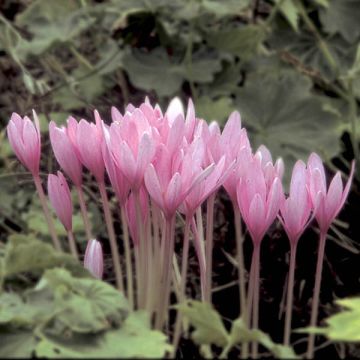
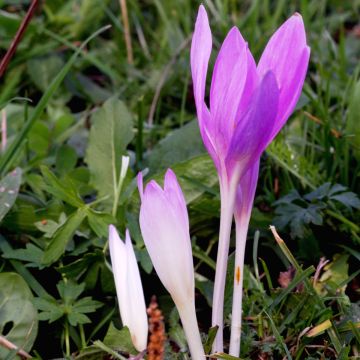
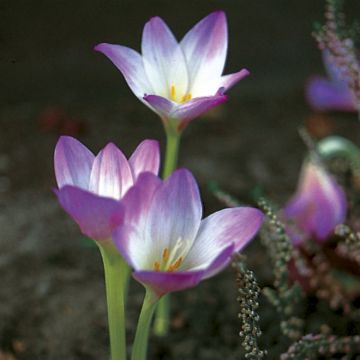
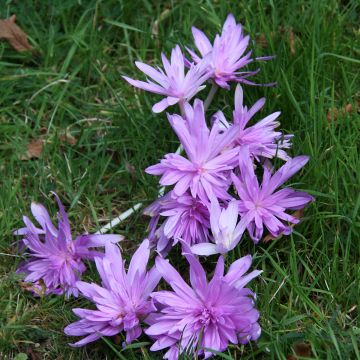
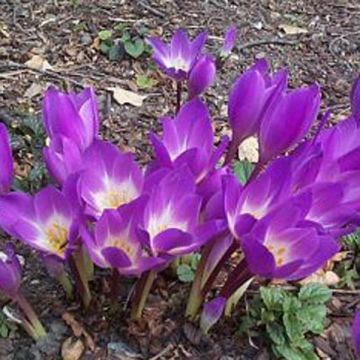
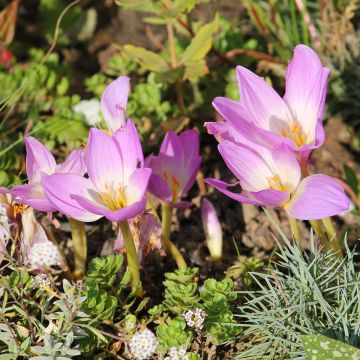
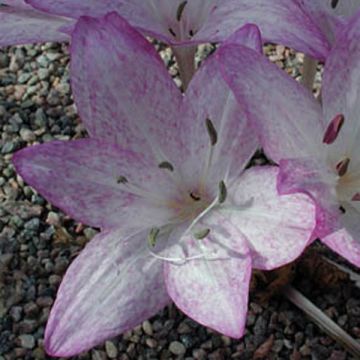
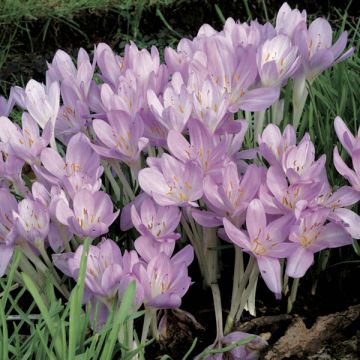
Comments